
Angela De Montigny: 'SKINS & STONES adorn my bones and style is what defines me'
By Hollie Nash
Inspired by native culture and women’s contemporary lifestyles, Canadian designer Angela DeMontigny is making a fundamental mark in the fashion industry. Almost 13 years ago, DeMontigny recognized the unmet potential for Aboriginal designs and went with it. Such an opportunity allowed her to not only incorporate the artistic traditions she had learned growing up, but to interpret these elements in a modern way.
Angela started sketching at the age of twelve and was constantly engulfed in the fashion industry.Be it through reading the latest fashion mag or creating her own designs- she adored every aspect. Angela feels that fashion is about personal expression, “[Fashion is] a way of expressing the many aspects of an individual through clothing.” She also feels it is important to include a specific and effective message in each of her collections. “It changes from each collection,” she states, “but usually the message is that you can dress yourself as a strong, modern person in a way that fits your personality and lifestyle.”
Her trademark is hand painted symbols and beaded accents-an inherent skill that has been handed down from her native ancestors for hundreds of years. Only the finest leathers, suede and sheerings are used to develop the finished garment and whether you are in the market for men or women’s clothing, DeMontigny got you covered, literally.
Her latest collection incorporates her favorite trend of this season, rocker chic. Leather, lots of metal studs and hardware, fringe and various fur garments can be seen in her clothing line. The unique concept of Angela’s designs is that they are extremely wear-able. They have a slight ‘edge’ or sexiness to them but at the same time, they are appropriate for the office, comfortable and possess a certain je ne sais quoi that adds to the versatility of the clothing. What else could you ask for?
Angela’s success has flourished throughout the years, and her designs have gotten a lot of coverage already in 2010. Most recently at the Aboriginal Fashion Week, she produced and debuted her new collection in Vancouver, BC during the first week of the Olympic Games. One of Angela’s proudest moments to date was when Canadian Native Olympian, Waneek Horn-Miller sported a diamond gorget created by DeMontigny. She believes, “the diamond piece will kick start a legacy fund for Aboriginal Youth in design."
Angela DeMontigny Clothing and Accessories can be found in boutiques in major city centers including Montreal, Toronto, and Calgary. Her designs are also sold internationally in the Netherlands, Germany, Italy and America. She currently has two specialty boutiques in the US, one in Wyoming and Colorado; however she plans to expand in the near future.
“Do not go where the path may lead, go instead where there is no path and leave a trail.” This quote certainly relates to the success of Angela DeMontigny as she paves the road for aspiring Aboriginal designers everywhere.
Booking orders for Fall 2010 now - if you'd like to make an app't to view the entire line of fashion for men and women or accessories, I can be reached at: 905-304-8952 or cell: 905-818-2751. For recent press, media coverage please contact Lee Arden Lewis at: 613-966-4078.
Images
Angela De Montigny
Fashion Writer
Hollie Nash
[see original article here]















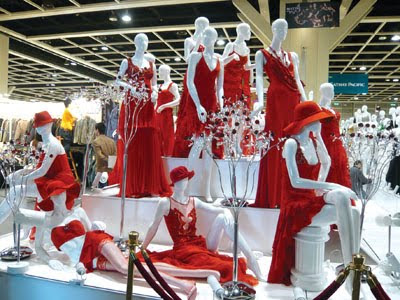
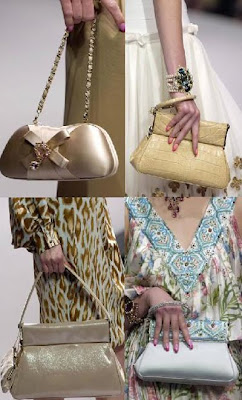


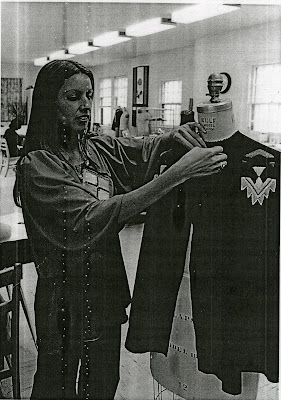


 (Wendy Ponca's dress designs. Dress on right features the important Osage spider symbol)
(Wendy Ponca's dress designs. Dress on right features the important Osage spider symbol)






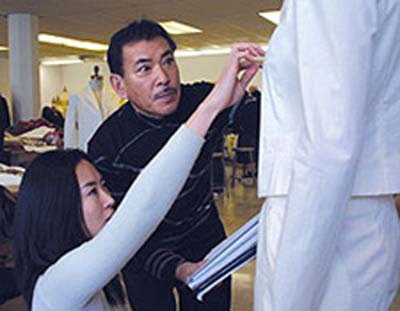



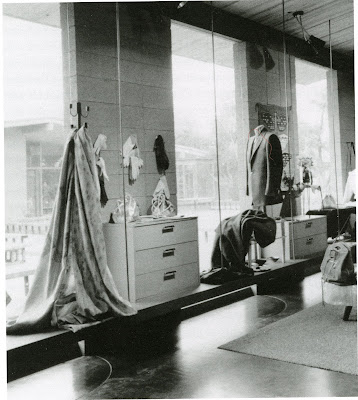











 Right, last night, detailed version (as much as I can, some things I'll have to miss out or can't say). We got to the Assembley Hall practically on the dot at 8:00pm, Phil from Sarah Tonin ran out through the backstage door to sneak us our free tickets, they had 5 minutes until they were on stage, so me & emma went for a joint. We smoked it so fast so we weren't late for the band we were supposed to be seeing, stood right at the front in the middle, and watched their every move. It's so good when you are so close that you are leaning yourself on the front of the stage and you're in touching distance, it's as if the music hits you first before everyone else and you get a sort of sneak preview. Sarah Tonin have such a good stage persona and the way they act with eachother is so good to watch, it's all good vibes. They played a new song, one which I later found out they hadn't named, and it was one of the best live songs I've ever heard, everyone's faces were astonished as to how good it was and Phil's guitar solo made everyone speechless, me & Emma were standing there with our mouths open, it was so good, but I missed that whole song on video, waiting for them to put it up on their Myspace. When they finished, me & Emma went for another joint and came back very stoned, we were laughing at absolutely everything and all the people that were in the seating seats were staring at us, we looked like a couple of idiots smack bang in the front of the middle of the audience prancing about & singing, then Chris & Phil from Sarahtonin came to meet us, everyone stared even more. Phil gave us a million (well actually Emma counted them and there was 37) flyers to hand out to people but somehow I have accumulated more. So... we stood there... with Sarahtonin... very stoned... waiting for The Kinks. And on they came, the only original band member who was with The Kinks from the start was Mick Avory, the drummer. He was standing at the front with the sound man, and corrrrrr the eye fucking that took place, I am aware that he is now an old man yes, but the fact that he is an original member of The Kinks is my reason for all of this, and if you closed your eyes for a second you could just imagine him standing there with his little bowl haircut and his little handmade mod suits from Carnaby Street. He was looking at us up & down so much it was unreal. Then they started playing, it was fantastic, Dave Clarke (lead vocals & guitar) was singing whilst staring at us for ages, he was another eye fucker. Holding that look with Mick Avory whilst he was playing was a fun game and it lasted ages. Then it was break time again, managed to spot Dave Clarke with a leather jacket on talking to some people so I casually walked past him and brushed my hand across his arse, it's oh so fun. They finished their set after about an hour of playing the favourites - Waterloo Sunset, Till The End Of The Day, Sunny Afternoon, Days, David Watts, You Really Got Me, All Day & All Of The Night and Lola. They went off straight away, didn't talk to anyone or anything, just went straight backstage. We hung around for a little bit as Chris & Phil invited us to a party at their friends house which was going to involve The Doors and Marijuana, but we didn't go in the end. However, Emma drove Chris & Phil to their destination so we waited around for them. Chris - ''Do you wanna come backstage for a bit then while we collect our gear?''... There was nobody else around apart from them and us so off we went. Walked past a silly security woman shouting for everyone to move out of the area and then she says to us ''Are you a... band or something?'' Then looked me up & down and smirked to herself, and Chris was like ''Yeah we're the band'' and I was like ''Yeah, I'm with the band''. And then we walked right past her and went backstage. There was a long white corridoor with several rooms filled with guitars & drums, now if it was the 60's, they would be full of hippies and every room you walked past there would be a little sing-song going on in there, like at The Riot House in Almost Famous, but unforatunatley it's 2010. We walked past one room with the door wide open very quickly, and The Kinks were in there, they all stared. They must've thought we were upto something from the eye contact we were exchanging while they were playing and then they saw us backstage with the other band. Me, Emma, Chris & Phil hovered around a bit while everyone sorted themselves out and we were 2 foot away from The Kinks dressing room, about to introduce ourselves to The Kinks, there was nobody else around, but we chickened out. We fucking chickened out. I've never been so pissed off at myself before! We could have stood there and introduced ourselves to the fucking Kinks but we were too nervous when it came down to it and because we built it all up too much we looked like idiots anyway hovering around their dressing room like little girls so I thought it was best we didn't embarrass ourselves even more and leave with SarahTonin, but now I seriously regret it, next time, I'll get right in there! We left, and piled ourselves into Emma's car and had a very fast car journey listening to Fleetwood Mac and I quote Chris - ''This song just makes you want to smoke a cigarette so can I have a toke of your cigarette please''. My leg was trapped underneath a guitar. We dropped them off, feeling very guilty for not being able to stay, promised we'd see them soon, thanked them for everything they'd done for us, and left, at 12am, for an hour's journey. We got to Eastbourne, met Jamie & Charlie and sat in the car until 5am getting fucking stoned, when we could've been at this house party with a band we loved so very much. These are the times I learn from. But then again, overall, it was a fucking magical experience and I won't forget it and I have the whole thing stored like a movie clip in my head that I play over and over again and I wish I could share it with everyone else and spill details that I've missed out JUST INCASE someone sees it who shouldn't. The life of a groupie in 2010 seems to have rules & regulations which wasn't the case in 1969, but if you close your eyes for a few seconds and if you have a big enough imagination, listen to the music, and you feel like you're there in 1969 with everyone else. I'll post some videos on here when I figure out how to do it.
Right, last night, detailed version (as much as I can, some things I'll have to miss out or can't say). We got to the Assembley Hall practically on the dot at 8:00pm, Phil from Sarah Tonin ran out through the backstage door to sneak us our free tickets, they had 5 minutes until they were on stage, so me & emma went for a joint. We smoked it so fast so we weren't late for the band we were supposed to be seeing, stood right at the front in the middle, and watched their every move. It's so good when you are so close that you are leaning yourself on the front of the stage and you're in touching distance, it's as if the music hits you first before everyone else and you get a sort of sneak preview. Sarah Tonin have such a good stage persona and the way they act with eachother is so good to watch, it's all good vibes. They played a new song, one which I later found out they hadn't named, and it was one of the best live songs I've ever heard, everyone's faces were astonished as to how good it was and Phil's guitar solo made everyone speechless, me & Emma were standing there with our mouths open, it was so good, but I missed that whole song on video, waiting for them to put it up on their Myspace. When they finished, me & Emma went for another joint and came back very stoned, we were laughing at absolutely everything and all the people that were in the seating seats were staring at us, we looked like a couple of idiots smack bang in the front of the middle of the audience prancing about & singing, then Chris & Phil from Sarahtonin came to meet us, everyone stared even more. Phil gave us a million (well actually Emma counted them and there was 37) flyers to hand out to people but somehow I have accumulated more. So... we stood there... with Sarahtonin... very stoned... waiting for The Kinks. And on they came, the only original band member who was with The Kinks from the start was Mick Avory, the drummer. He was standing at the front with the sound man, and corrrrrr the eye fucking that took place, I am aware that he is now an old man yes, but the fact that he is an original member of The Kinks is my reason for all of this, and if you closed your eyes for a second you could just imagine him standing there with his little bowl haircut and his little handmade mod suits from Carnaby Street. He was looking at us up & down so much it was unreal. Then they started playing, it was fantastic, Dave Clarke (lead vocals & guitar) was singing whilst staring at us for ages, he was another eye fucker. Holding that look with Mick Avory whilst he was playing was a fun game and it lasted ages. Then it was break time again, managed to spot Dave Clarke with a leather jacket on talking to some people so I casually walked past him and brushed my hand across his arse, it's oh so fun. They finished their set after about an hour of playing the favourites - Waterloo Sunset, Till The End Of The Day, Sunny Afternoon, Days, David Watts, You Really Got Me, All Day & All Of The Night and Lola. They went off straight away, didn't talk to anyone or anything, just went straight backstage. We hung around for a little bit as Chris & Phil invited us to a party at their friends house which was going to involve The Doors and Marijuana, but we didn't go in the end. However, Emma drove Chris & Phil to their destination so we waited around for them. Chris - ''Do you wanna come backstage for a bit then while we collect our gear?''... There was nobody else around apart from them and us so off we went. Walked past a silly security woman shouting for everyone to move out of the area and then she says to us ''Are you a... band or something?'' Then looked me up & down and smirked to herself, and Chris was like ''Yeah we're the band'' and I was like ''Yeah, I'm with the band''. And then we walked right past her and went backstage. There was a long white corridoor with several rooms filled with guitars & drums, now if it was the 60's, they would be full of hippies and every room you walked past there would be a little sing-song going on in there, like at The Riot House in Almost Famous, but unforatunatley it's 2010. We walked past one room with the door wide open very quickly, and The Kinks were in there, they all stared. They must've thought we were upto something from the eye contact we were exchanging while they were playing and then they saw us backstage with the other band. Me, Emma, Chris & Phil hovered around a bit while everyone sorted themselves out and we were 2 foot away from The Kinks dressing room, about to introduce ourselves to The Kinks, there was nobody else around, but we chickened out. We fucking chickened out. I've never been so pissed off at myself before! We could have stood there and introduced ourselves to the fucking Kinks but we were too nervous when it came down to it and because we built it all up too much we looked like idiots anyway hovering around their dressing room like little girls so I thought it was best we didn't embarrass ourselves even more and leave with SarahTonin, but now I seriously regret it, next time, I'll get right in there! We left, and piled ourselves into Emma's car and had a very fast car journey listening to Fleetwood Mac and I quote Chris - ''This song just makes you want to smoke a cigarette so can I have a toke of your cigarette please''. My leg was trapped underneath a guitar. We dropped them off, feeling very guilty for not being able to stay, promised we'd see them soon, thanked them for everything they'd done for us, and left, at 12am, for an hour's journey. We got to Eastbourne, met Jamie & Charlie and sat in the car until 5am getting fucking stoned, when we could've been at this house party with a band we loved so very much. These are the times I learn from. But then again, overall, it was a fucking magical experience and I won't forget it and I have the whole thing stored like a movie clip in my head that I play over and over again and I wish I could share it with everyone else and spill details that I've missed out JUST INCASE someone sees it who shouldn't. The life of a groupie in 2010 seems to have rules & regulations which wasn't the case in 1969, but if you close your eyes for a few seconds and if you have a big enough imagination, listen to the music, and you feel like you're there in 1969 with everyone else. I'll post some videos on here when I figure out how to do it. 
